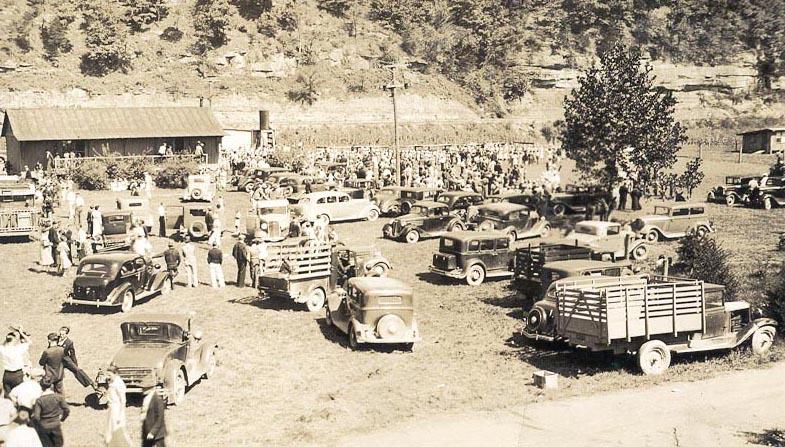The Dedication of the Station
By the week after Labor Day in 1925, the Station was ready for dedication. The ceremony was one week after the dedication of the first Experiment Substation established in Kentucky, in Caldwell County.
While reports of that dedication are sketchy at best, we do know that College of Agriculture Dean T.P. Cooper and other dignitaries from Lexington sojourned by Pullman train from Lexington on the morning of September 11, 1925 for the dedication that afternoon. Lieutenant Governor H.H. Denhardt gave an address before viewing work undertaken thus far, including the poultry flock, dairy herd, and the areas planted to trees.

By the following year, things were in full speed with a field day held in late September. The two-day event, called the Robinson Harvest Festival, featured ballad singing, hog and chicken calling and fiddling contests, as well as displays of fruits and vegetables, home handicrafts, and farm products; rounding off the festival were a mule show and a healthy baby contest.
Miss Hale, the field worker hired the previous year, was the secretary/treasurer of the festival. In the beginning of her report about the 1926 festival, Miss Hale reiterated the importance of the station’s work to the people of the area. She wrote:
“Someone has said that where there is a big need and a little faith that need will be met. Surely, there is a big need for better agricultural conditions in the mountains of Kentucky. The time was when, if the contents of the smokehouse ran low, there was a forest of game nearby. The time was when, in case of financial emergency, such as a doctor’s bill, there was a black walnut tree standing on the farm. Today, these conditions have changed, yet the population is rapidly increasing and the demands for the necessities of life are becoming greater.”
According to the Courier Journal report of the event, folks came “from 40 miles around bringing chickens and chairs, ballads and baskets.”
Miss Hale’s report also notes that area livestock flocks and herds had already improved, as evidenced by the winners at the festival. She wrote:
“Another encouraging feature of the festival was that a number of the prize winners were folks who had obtained a start from the Robinson Substation Farm. For example, the woman winning the most prizes on poultry had purchased egg settings from the Substation, and the winner of the sweepstake on hogs had obtained his stock here. In a number of instances, ribbons were tied on corn raised from seed grown on the Robinson Substation Farm.”
It was in that first year that the Substation began an unusual program referenced by Miss Hale that made improvements on surrounding farms quickly. That deal was that anyone could bring in a bushel of ordinary corn seed to the Substation and trade it in for a bushel of improved seed; a poor, common rooster could be traded in for an improved rooster; and any common boar could be swapped for an improved one. By making this deal, farm families in the area could see, quickly and on their own farms, the vast improvements that scientific agriculture could make.
Miss Hale, who seems to have been indefatigable (she logged 3,000 miles by horseback for farm visits), left her position as field worker in 1929 to work with E.O. Robinson. Robinson asked her to establish Home Place at Ary in Perry County, which was a model school and demonstration home. Her work was similar in nature to that which she had so successfully completed at the Substation. Her position remained vacant after her departure.
